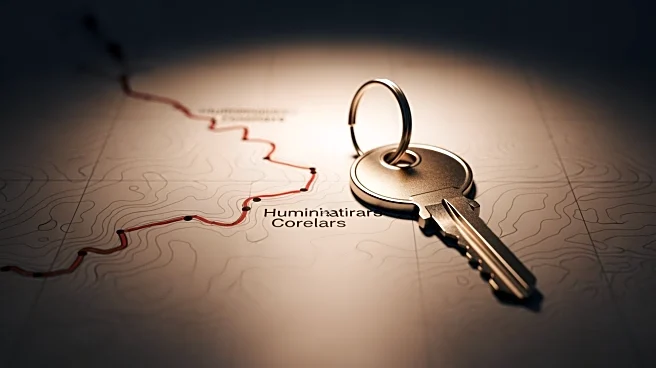What's Happening?
Humanitarian corridors are temporary demilitarized zones established to allow safe passage for civilians and humanitarian aid during armed conflicts. These corridors are often proposed by third states,
activists, and the media to alleviate suffering, but their establishment does not relieve parties to a conflict from their obligations under international humanitarian law. The concept of humanitarian corridors is ambiguous, lacking a legal basis or strictly agreed-upon definition. They are intended to protect civilian populations from military operations, but their temporary and limited nature can undermine existing obligations to allow civilians to leave conflict zones and for impartial aid to reach those in need.
Why It's Important?
Humanitarian corridors are crucial in providing temporary relief in conflict zones, allowing civilians to evacuate and aid to be delivered. However, their effectiveness is often questioned due to their temporary nature and the risk of manipulation by military or political agendas. The corridors can be used to smuggle weapons or regroup forces, and their establishment may divert attention from atrocities elsewhere. Despite these challenges, they remain a necessary compromise in situations where no other access is possible, highlighting the need for more permanent solutions to protect civilians and ensure humanitarian aid delivery.
What's Next?
The future of humanitarian corridors depends on the willingness of conflicting parties to agree on their establishment and the international community's ability to enforce their protection. As conflicts continue to evolve, the need for more robust and permanent solutions to protect civilians and deliver aid will become increasingly urgent. Humanitarian organizations must navigate the ethical dilemmas posed by these corridors and advocate for broader access and protection under international humanitarian law.
Beyond the Headlines
The concept of humanitarian corridors raises ethical and legal questions about the separation between humanitarian and non-humanitarian spaces. While they provide temporary relief, they can also be manipulated for political purposes, undermining the principle of free access to victims. The normalization of corridors in public discourse should prompt caution, as they may hinder the enforcement of international humanitarian law and create a false sense of safety.












